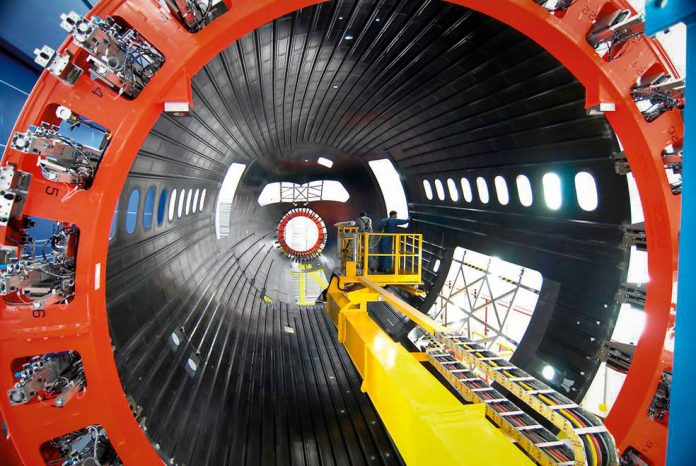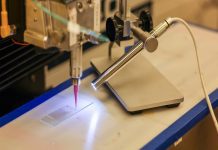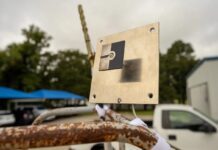
NASA’s Hi-Rate Composite Aircraft Manufacturing (HiCAM) project has kicked off a research initiative that would look into accelerating the construction of large aircraft components from composite materials.
The study aims to manufacture parts, such as aircraft wings and fuselages, at a competitive cost and at a higher speed rate compared to that of aircraft made from metallic materials, according to Rick Young, HiCAM’s project manager.
The project is part of the Sustainable Flight National Partnership, a program through which NASA collaborates with industry, academia, and government to create more sustainable aviation technologies.
The research effort seeks to create lighter, fuel-efficient aircraft by building parts out of composites that can be a custom-tailored mixture of materials like plastics, graphite, and ceramics.
“A great analogy to how composites work is a sheet of plywood,” Young said. “It has many layers of wood, and the grain of each layer runs in a different direction. These layers are stacked up and glued, making plywood. Putting layers in different directions keeps each layer of wood from splitting along the grain, making it stronger.”
Composites are made out of layers of fibre-reinforced materials, usually plastic, with each layer running in a different direction to form a stiff structure when stacked together.
The global commercial aviation sector is expected to need approximately 40,000 new aircraft during the next 20 years to meet the demand for air travel and replace older units. Most of the new aircraft will be needed in the single-aisle market.
HiCAM targets the construction of 80 units per month using composite materials.




















